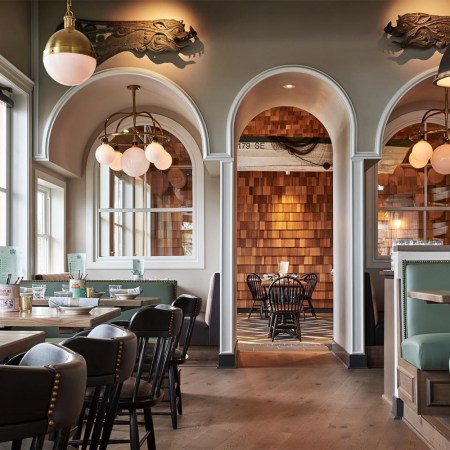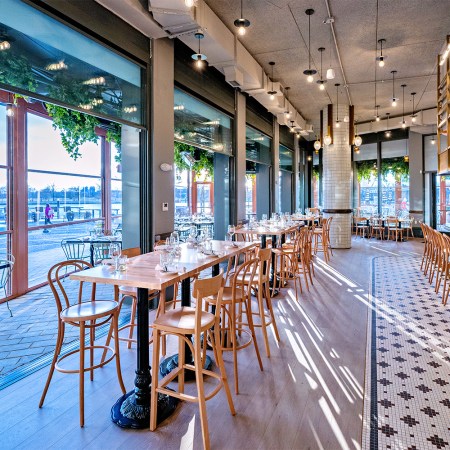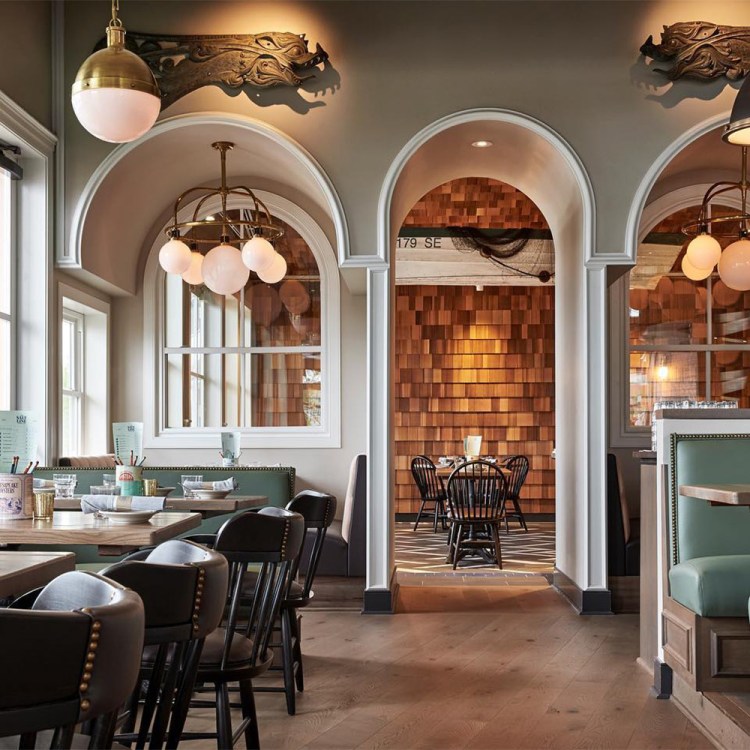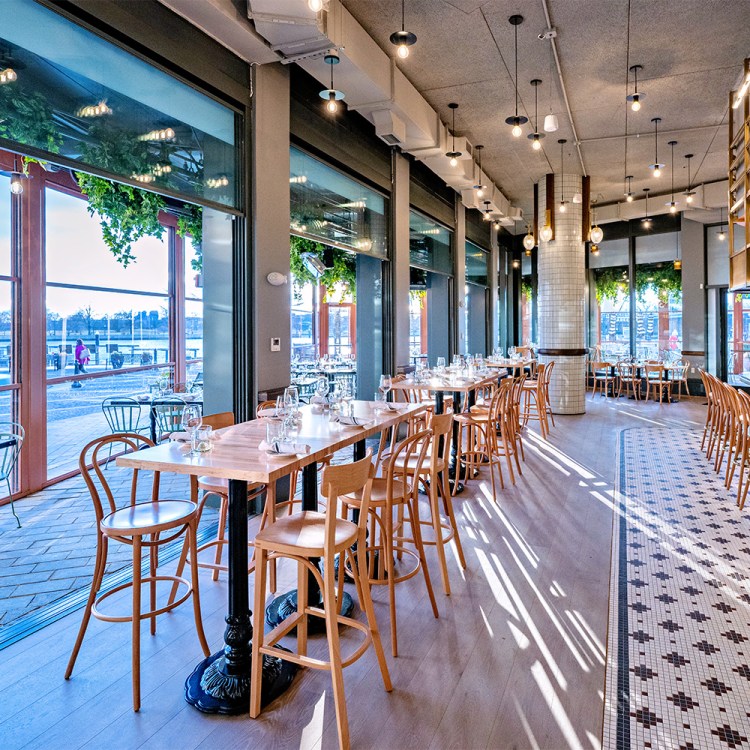Chef Stephen P. Perkins Sr. has a hard time thinking of even one thing he doesn’t like about his job. “When the key to your office is an authentic skeleton key, and you walk out your door and you’re watching horses and carriages go by, and then you get to go into a kitchen that’s modern … it’s cool,” he says.
No, Perkins is not a time-traveling private chef, though that’s not too far off from the reality, either. He manages the four taverns in Colonial Williamsburg’s Historic Area, and with over three decades of experience, a bevy of authentic cookbooks at his disposal and a genuine love of research, it seems like a job that was handcrafted for him.
We talked to him about what it’s like working and cooking at one of America’s greatest living history museums.
InsideHook: What restaurants are you responsible for?
Stephen P. Perkins Sr.: I’m responsible for the Historic Area, so for right now, there are four taverns. Two of them are currently operational, and that’s King’s Arms and Josiah Chowning’s. Campbell’s will open later on, and that’ll be based on seafood. Mr. Shields’ Tavern has not been opened since I’ve been here and has basically been an overflow banquet facility for the property.
How do you approach crafting authentic recipes for your menus?
I’ll start initially with Internet research, so I would find a source — the name of a cookbook author — from the time period, and I would look it up and I would buy the book. So as of now, I’ve got a good 15 to 20 recipe books from the time period. For probably about every 15 or 20 recipes you read, you find one that might appeal to what you think would be the modern palate.
So there must be at least a few dishes you knew people would be put off by, right?
There’s one I’m recalling that had a good amount of organ meats in it — what they were calling a forcemeat. So they didn’t have grinders back in the day, but they were doing some chopped meat that they were mixing with bread — bread is everywhere as a binder. But it was very complex; it was very French in concept and origin. It was a braise and a roast and a stew, but then there were all these garnishing elements to it. I felt like, “No way Americans would eat that!” But to me as a chef, I was like, “That’s really cool!” It was pretty intricate.
Anything you’re tempted to serve anyway?
I’ll tell you what — I so want to put eel on a menu! And actually, that ties into some of the Indian influences, because they were smoking eel. And I thought: How cool would it be to do a corn chowder and just garnish it with smoked eel? That would just be so fun!
Fun indeed! But seriously — how do you manage the discrepancy between authenticity to the past and catering to a modern diner?
So take this one called onion pie. When you dig into the recipe, there’s onions in it, but there’s a whole lot of apples and potatoes and eggs as well. So even though onions took the name — and pies were pretty popular, back in the day — they had a lot of filling, but there wasn’t any creaminess in the filling. They just loaded it full of onions, apples and potatoes, put pastry crust on it and popped it in the oven for about an hour. Peculiarly, they had a lot of hard-boiled eggs chopped in pies. I didn’t think that would fly over so well with our folks, with the American palate. We decided with this dish, when we launch it, we’re gonna put a sunny-side egg on top. And we’ll do a little cream sauce to bind it together, because first we think: eggs, it’s like quiche. But it’s really not quiche, so we don’t want it to set like that. So we’re playing around with it.
Before you arrived at your current job, did you have any previous experience with this sort of anthropological approach to cuisine?
At the restaurant I was working at right before this [Waypoint Seafood and Grill], we would do wine dinners, and we would pick a theme, so I was always trying to go back to the source. Google Maps was really cool because you could find a place in the world and zoom in on it and say, “restaurants nearby,” and you could just see what people eat every day. And another was, I always hit the books. I tried to find the encyclopedias and true sources, and then you twist it on what you have locally to work with. But typically that’s my approach: to drill down into what’s true to the region and get an understanding of it, and then use your own imagination to create the menu.
Are there any things you serve that aren’t actually all that authentic to the time period?
Brunswick Stew, for instance. It’s been here since the ’50s, but they weren’t cooking with tomatoes, back in the day. Right? Most people thought they were poison. Jefferson was experimenting with some in his garden. But tomatoes didn’t really get popularized until later in the 1800s. So Brunswick Stew was one of those things where it’s a [Colonial Williamsburg] tradition.

Is your approach different to that of previous chefs at the property, then? When you add new recipes, are you looking to add more authenticity?
The menu that we’re introducing now, we’re actually writing excerpts of the recipe from the book that it came from. So one is gonna be a stewed duck, and it comes from Martha Washington’s cookbook. Another one is gonna be a stewed beef that comes from Hannah Glasse. And the onion pie I referred to comes from a guy named Dr. Lobb. So what we’re doing is, we’re putting a tagline or a parenthesis in italics at the end of the dish description of the cookbook it came from, the author, and the year it was written, as a historically accurate dish.
Are there any dishes we eat now that you think people would be surprised to learn actually date back to the colonial era?
Yeah, chef’s salad! Chef’s salad really goes back to what they call salmagundi, back in the day. It was a lot more intricate than what our chef’s salad is now, but it had a lot of fresh and pickled vegetables. Dinner was midday, and supper was after that, and they were using a lot of leftovers from the dinner table to recreate dishes for supper. Or chicken hash. Hashes were a huge thing back in the day. In particular, waffles were very fashionable and popular. We’re gonna do waffles on trenchers.
Are there any modern luxury ingredients that were seen to be the food of the poor or the masses at the time?
Sturgeon was huge! I mean it was rampant. There’s writings from back in the Jamestown era, where they said you could walk across the water on the backs of sturgeon on the James River.
How about the opposite — foods that seem normal to us now but that were sought-after then?
Certainly the spices. I was talking with the folks here with the Foodways, and a lot of it is like, I’m rich and I can afford a lot of spices, and I’m gonna put a lot of it on my food.
Or sugar. That’s the whole reason the slave trade started! They did use sugar a lot less than we do today. The last research I did, the average person or household consumed 12 pounds of sugar a year, and the average American today eats 150 pounds of sugar a year. It’s just embedded in our food. We don’t even know it’s there. It’s like dope. It’s addictive. And we’re just killing ourselves. It’s just stupid. But that’s another subject.
This article was featured in the InsideHook DC newsletter. Sign up now for more from the Beltway.






















